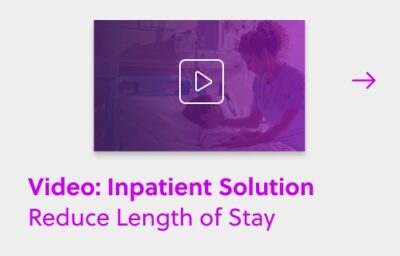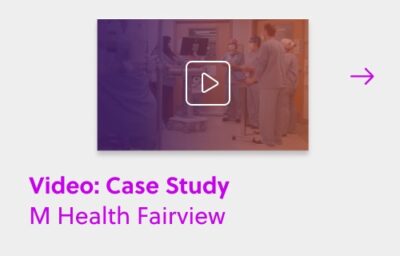Over the last week, as the nation has come to grips with the possibility that a surge in critically ill patients could create severe shortages of hospital beds, ICU beds, ventilators, supplies, and hospital staff, the potentially devastating impact of COVID-19 to the US health system has become clear.
Given these potential challenges, the next question is: What measures can hospitals put in place to help them mitigate resource constraints through the pandemic? Certainly boosting capacity is one of them, but many have advocated the importance of efficiency in use of resources (for example, KP Surge plan recommendations for focusing on discharges and CDC disposition recommendations).
Qventus partners with leading health systems to improve operations, and based on our work to help these organizations prepare for the pandemic, it is clear that now, more than ever, health systems should focus on optimizing patient flow.
The article below outlines why operational efficiency is so critical during a pandemic, recommends specific operational strategies for hospital leaders to pursue, and shares COVID-19 interventions that are being developed by Qventus and our customers.
Efficient Patient Flow Could Alleviate Majority of COVID-19 Demand
As we’ve worked with health systems to prepare for COVID-19, an overarching takeaway is the critical importance of operational hygiene. In a pandemic, operating a hospital with efficient patient flow is the equivalent of individuals washing their hands — it’s something we should always do, and it’s even more important during the pandemic.
In fact, efficient patient flow could mitigate the majority of the potential resource shortages — without requiring additional staff.
To illustrate, consider a hospital with 500 Med-Surg beds and 46 ICU beds, operating at average capacity (70% Med-Surg and 80% ICU). During the course of the pandemic, a surge in COVID-19 patients could create shortages in both ICU and Med-Surg beds for 5 – 6 weeks.
However, efficient patient flow practices that shorten the length of stay (LOS) for an ICU patient by 12 hours and the Med-Surg LOS by 0.5 days could free up 7 ICU beds and 56 Med-Surg beds — enough capacity to satisfy 90% of the additional ICU bed demand and 74% of the additional Med-Surg demand.

Patient Flow Recommendations for COVID-19
What actions can health systems take to optimize flow in the midst of the pandemic? Like “washing hands” for individuals, some of the recommendations are fundamental patient flow practices that are always important — but which are even more important now, and which can nearly always be improved upon. Based on recent work with our customers, we recommend that hospitals be prepared to do the following:
- Establish a daily — or even more frequent — cadence for leaders to monitor and adapt to real-time changes in COVID-19 demand
- Move patients from ICUs to step-down units as efficiently as possible
- Create downstream capacity to open up space for ICU patients and free up staff to fully resource all ICUs; put a major emphasis on managing LOS overall
- Focus on critical resources like negative airflow isolation room capacity, ventilators, and CT scanners
- Monitor available staffing levels and continuously reevaluate how to best staff across the house as clinical staff capacity becomes limited
- Closely monitor unusually high usage of any supplies across the health system
Real-World COVID-19 Interventions
While the above recommendations apply to all hospitals, we’re also working closely with customers, on a pro bono basis, to develop COVID-19-specific interventions using the Qventus platform.
According to Dr. Karyn Baum, Vice President, System Clinical Operations at M Health Fairview, “We appreciate the rapid development work that Qventus has done to help us better monitor, predict, and manage critical resource constraints as we prepare for the potential demands from new COVID-19 cases.”
Our goal is that by sharing these practical, real-world examples, we can advance the discussion regarding actions health systems nationwide can take to respond to the pandemic.
The Qventus COVID-19 interventions include:
1. Morning Report of Predicted COVID-19 Demand
Today, health systems have limited visibility into expected COVID-19 demand, especially at a local level. Most predictive models operate at national level, while hospitals have a need to plan for upcoming ICU, ventilator, and Med-Surg demand at a county or CBSA level, on a daily basis.
We are building localized SEIR models for each local Healthcare Referral region to estimate expected COVID-19 cases and the resulting Med-Surg, ICU, and ventilator demand for each hospital. (Note that we are looking to make these predictions available to any hospital, not just for Qventus customers.) Additionally, Qventus customers can receive daily morning reports of goals for discharges needed by level of care to maintain their census.
2. ICU & Ventilator Capacity Optimization in Real-Time
As hospitals look to streamline flow, freeing up ICU & ventilator capacity as soon as possible is critical. However, experience shows that approximately 33% of ICU patients are ready to step down at least 8-12 hours prior to the writing of their transfer order.
Qventus can provide early recommendations of ICU patients ready for step down, driven by advanced real-time algorithms and supported by standard work. Qventus also monitors ICU and ventilator capacity in the background, automatically detects supply-demand mismatches, and suggests opportunities to free up these critical resources.
3. Negative Airflow Isolation Capacity Management
Hospitals are looking to minimize unnecessary use of negative airflow isolation rooms to ensure sufficient capacity for COVID-19 patient needs. In particular, it’s common for some negative airflow beds to be used for patients with contact or droplet isolation needs (but not airborne isolation).
Qventus can provide real-time nudges for potentially unnecessary utilization of negative airflow isolation rooms based on clinical / operational factors. Additionally, for all patients occupying negative airflow isolation rooms, Qventus can create prioritized, ML-driven lists for dischargeability.
4. Med-Surg Capacity Creation by Optimizing Length of Stay
Med-Surg beds are predicted to be over capacity in many regions, and can also be a bottleneck for ICUs, EDs, and ORs. As illustrated above, hospitals that optimize length of stay for safe, timely discharge can release Med-Surg bed capacity and meet projected inpatient demand from COVID-19 patients.
The core Qventus platform and inpatient solution optimize length of stay during normal operations. We are extending the capabilities for COVID-19 with an ML algorithm that prioritizes top candidates for discharge across all Med-Surg units, enabling virtual rounding and barrier management. We’re also providing real-time visibility and tracking of discharge goals needed to meet predicted COVID-19 capacity needs, as well as ML-driven dual disposition planning to expedite discharges.
5. Manage Ancillary Capacity Through OP Conversion / Cancellation
Ancillaries such CT and MRI are predicted to be bottlenecks with the surge of COVID-19 cases. As a consequence, hospitals need to reduce demand as much as possible.
Qventus can identify orders for non-COVID-19 patients that providers can cancel or defer to outpatient settings. The software can also provide both real-time nudges to coordinate between frontline teams, physicians, and ancillaries, as well as a centralized view of such orders.
Conclusion
While the COVID-19 pandemic threatens to overload the health system, hospitals that focus on operational efficiency stand the best chance of avoiding severe resource constraints.
Qventus is working closely with our customers to plan for and manage through the pandemic. We’re continuing to develop the COVID-19 pandemic model to keep it up to date with the evolving situation, and we’re actively deploying new software interventions to improve flow.
We’ve been heartened by the response to and interest in the COVID-19 model over the past week, and welcome additional feedback or interest in exploring how we can collaborate on either the model or the ML-based software interventions.


